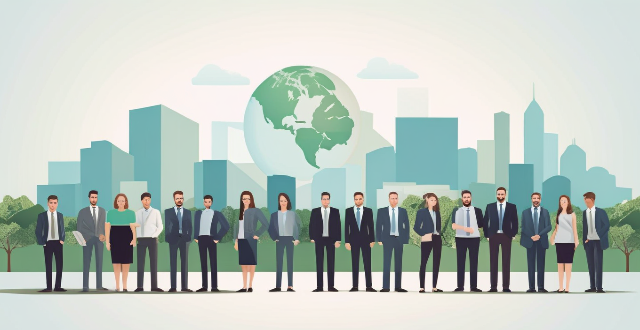Climate summits are global events where various stakeholders come together to address climate change. The key participants include heads of state, international organizations, NGOs, academics, business leaders, and youth activists. Each group plays a crucial role in shaping decisions and actions to mitigate the effects of climate change.

Who are the Key Participants in a Typical Climate Summit?
Climate summits are global events where countries, organizations, and individuals come together to discuss and address the pressing issues related to climate change. The key participants in these summits play a crucial role in shaping the decisions and actions taken to mitigate the effects of climate change. In this article, we will explore the various stakeholders involved in a typical climate summit.
Heads of State and Government
The most prominent participants in a climate summit are the heads of state and government from around the world. These leaders represent their respective countries and have the power to make binding commitments on behalf of their nations. They often give opening speeches, participate in high-level discussions, and sign agreements to reduce greenhouse gas emissions and promote sustainable development.
Examples of Heads of State and Government at Climate Summits:
- United States President
- French President
- German Chancellor
- Indian Prime Minister
- Chinese President
Representatives of International Organizations
International organizations such as the United Nations (UN), World Bank, and International Monetary Fund (IMF) also play a significant role in climate summits. These organizations provide technical expertise, financial resources, and support for implementing climate action plans. They often facilitate negotiations between countries and help to monitor progress towards achieving climate goals.
Examples of International Organizations Participating in Climate Summits:
- United Nations Framework Convention on Climate Change (UNFCCC)
- World Meteorological Organization (WMO)
- International Energy Agency (IEA)
- Global Environment Facility (GEF)
Non-Governmental Organizations (NGOs)
NGOs are non-profit organizations that work on various issues, including climate change. They often represent civil society and bring attention to the concerns of affected communities, such as those living in areas vulnerable to climate impacts. NGOs participate in climate summits by organizing side events, providing input during negotiations, and advocating for stronger climate action.
Examples of NGOs Participating in Climate Summits:
- Greenpeace
- World Wildlife Fund (WWF)
- 350.org
- Friends of the Earth
Academics and Researchers
Academics and researchers contribute to climate summits by sharing their scientific knowledge and expertise on climate change. They present research findings, analyze data, and provide recommendations for policymakers based on scientific evidence. Their involvement helps to ensure that decisions made at climate summits are informed by the latest scientific understanding of climate change.
Examples of Academics and Researchers Participating in Climate Summits:
- Climate scientists from universities and research institutions
- Economists studying the economic implications of climate change
- Social scientists analyzing the social dimensions of climate change
Business Leaders and Industrial Representatives
Business leaders and industrial representatives also play a role in climate summits. They represent companies and industries that are both affected by climate change and contribute to its causes through greenhouse gas emissions. These participants often discuss ways to reduce emissions through innovation, investment in renewable energy sources, and implementation of sustainable business practices.
Examples of Business Leaders and Industrial Representatives Participating in Climate Summits:
- CEOs of major corporations
- Trade associations representing specific industries
- Investors focused on sustainable investments
Youth Activists and Advocates
Youth activists and advocates bring a unique perspective to climate summits, representing the voices of future generations who will be most affected by climate change. They often push for more ambitious climate action and hold governments accountable for their commitments. Youth participation is particularly important given the long-term nature of climate change challenges.
Examples of Youth Activists and Advocates Participating in Climate Summits:
- Young climate activists like Greta Thunberg
- Student organizations focused on climate issues
- Youth delegations representing various countries
In conclusion, a typical climate summit involves a diverse range of key participants, each with their own roles and responsibilities in addressing the global challenge of climate change. By working together, these stakeholders can help to develop effective strategies for reducing greenhouse gas emissions, adapting to the impacts of climate change, and building a more sustainable future for all.